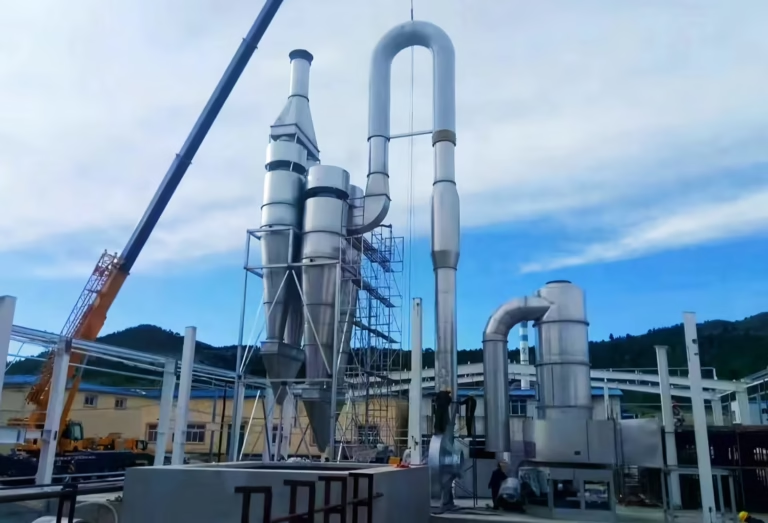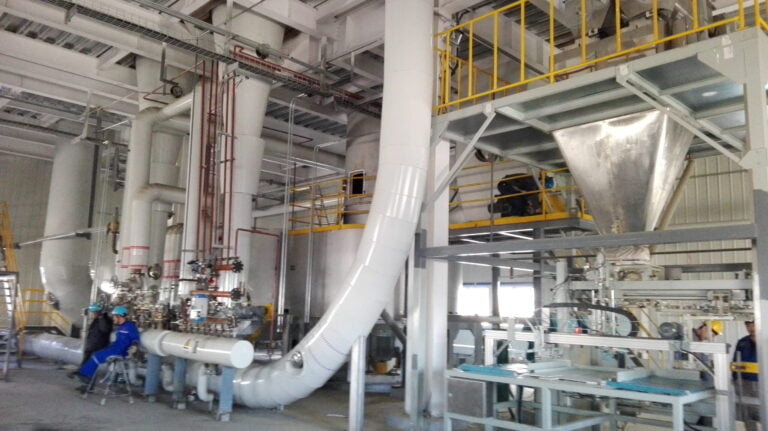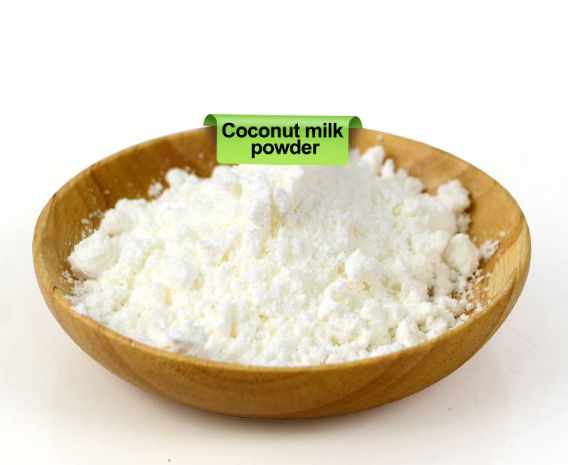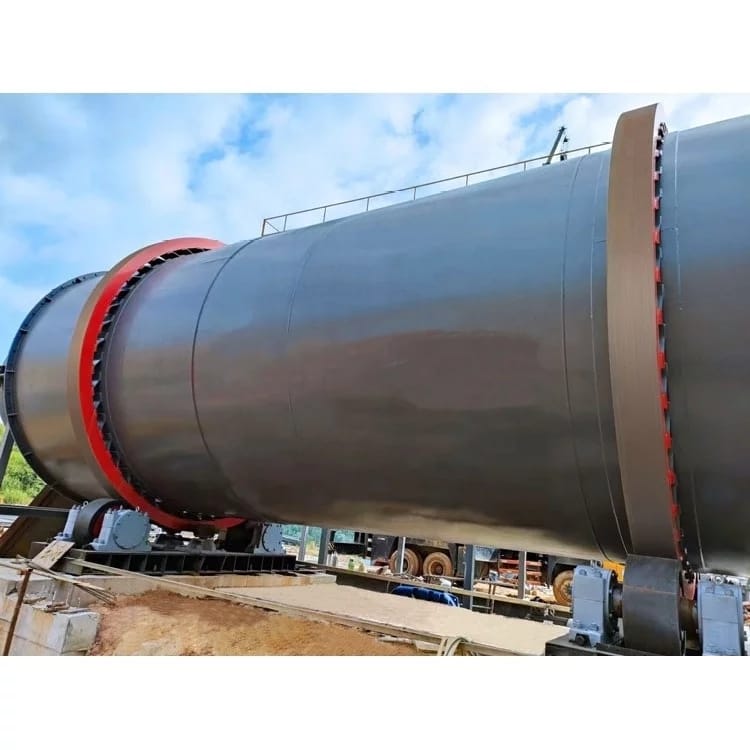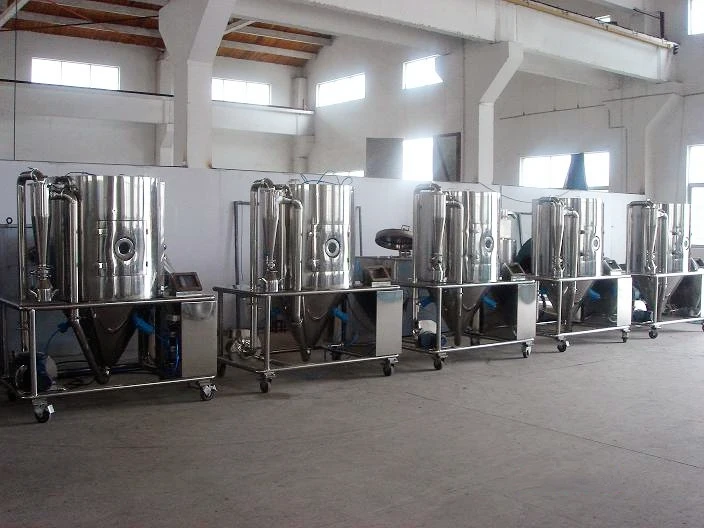为初学者解释流化床干燥机的容量
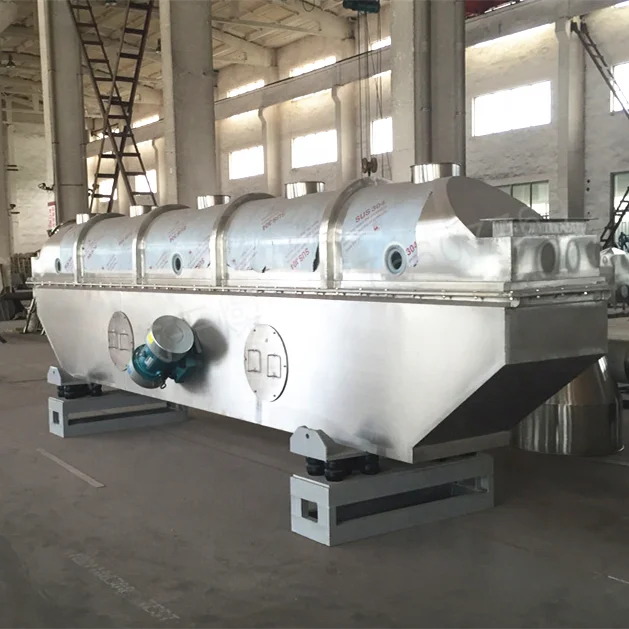
Fluid bed dryers come in many sizes. You can find models that handle as little as 50 grams in a laboratory or as much as 50 tons per hour in industrial settings. The table below shows typical ranges:
Scale | Capacity Range |
|---|---|
Laboratory | 50 克至 2 公斤 |
Industrial | Up to 50 tons/hour |
When you understand fluid bed dryer capacity, you can make sure your equipment matches your production needs. You avoid problems like over-drying or under-drying. You also keep your process efficient and reliable.
You meet your production goals.
You remove the right amount of moisture every time.
关键要点
Fluid bed dryer capacity varies widely, from small lab models handling 50 grams to industrial units processing up to 50 吨每小时.
Choosing the right dryer capacity is crucial. A dryer that is too small slows production, while one that is too large wastes energy and money.
Understand your material’s properties, such as particle size and moisture content, to select the appropriate dryer for efficient drying.
Always assess your production needs and future growth when selecting a fluid bed dryer to ensure it meets your requirements.
Different applications require specific dryer capacities. Use a quick reference table to match your process needs with the right fluid bed dryer.
What is fluid bed dryer capacity?
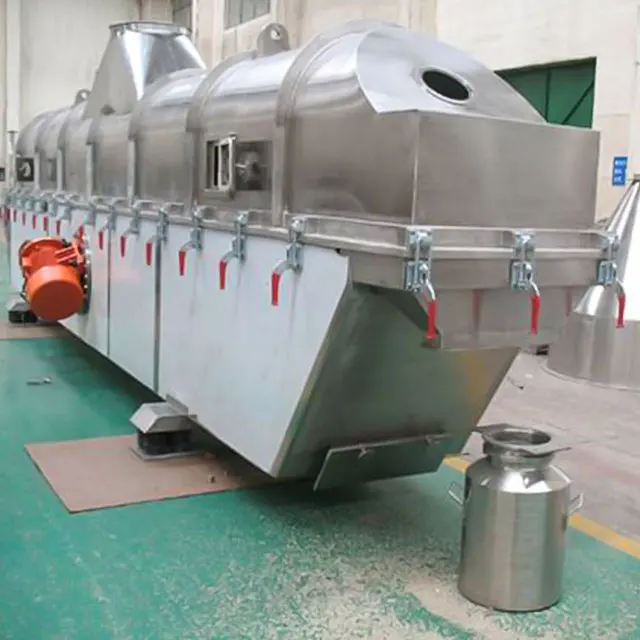
Capacity definition
Fluid bed dryer capacity tells you how much material you can dry in one cycle or over a set period. You measure this in kilograms, grams, or tons per hour, depending on your needs. When you look at fluid bed dryer capacity, you see how much product fits inside the dryer and how quickly you can process it. This number helps you plan your production and make sure you meet your goals.
You might use a small dryer in a lab to test new products. You might need a large dryer in a factory to handle bulk materials. The right fluid bed dryer capacity lets you dry the right amount of product without wasting energy or time.
Why capacity matters
Choosing the correct fluid bed dryer capacity makes a big difference in your process. If you pick a dryer that is too small, you slow down production. If you choose one that is too large, you waste energy and money. You want a dryer that matches your daily output and fits your material type.
提示: Always check your production needs before you select a dryer. This helps you avoid problems and keeps your process running smoothly.
Fluid bed dryers offer improved heat transfer and gentle handling of materials. You get a more efficient way to dry bulk solids. When you match the dryer size to your needs, you increase drying efficiency and product loading capacity. You also improve thermal efficiency and control product temperature, which is important for heat-sensitive materials.
You prevent issues during drying that can affect efficiency.
You ensure consistent product quality every time.
Fluid bed dryer capacity helps you reach your goals and maintain high standards. You get reliable results and better control over your process.
Fluid bed dryer capacity range
Lab-scale capacities
You can start with a small fluid bed dryer in a laboratory. These units handle tiny amounts of material, which makes them perfect for research and testing. Most lab-scale dryers have a capacity from 500 grams up to 5 kilograms. You use them to dry powders, test new recipes, or check how a material reacts to drying.
Capacity Range | 应用领域 |
|---|---|
500 g to 5 公斤 | Pharmaceutical research and development, chemical process optimization, food product development, material testing and characterization, innovation in drying techniques. |
You might see these dryers in places like:
Pharmaceutical labs for drying wet granules or powders.
Chemical labs for testing new materials.
Food labs for drying herbal powders or vitamins.
Universities and research centers for teaching and small projects.
Lab-scale dryers give you flexibility. You can try different drying methods without using a lot of material. You also get fast results, which helps you make decisions quickly.
Pilot and industrial capacities
When you move to pilot or industrial production, you need a larger fluid bed dryer capacity. Pilot-scale dryers help you test your process before full production. These dryers usually handle from 0.2 kilograms up to 50 kilograms per batch. You can use them to scale up your recipe or process from the lab to the factory.
Industrial fluid bed dryers come in even bigger sizes. Some models can dry up to 200 吨每小时, especially in continuous systems. Batch dryers for industry often start at 10 kilograms and go up to several tons per batch. Continuous dryers work best for large factories that need to dry a steady stream of material.
Here are some typical batch capacities for pilot and industrial models:
模型 | Batch Capacity (0.5 堆积密度) |
|---|---|
SFBD-500G | |
SFBD-1K | 350 grams min / 1 kg max |
You can also find continuous fluid bed dryers for large-scale operations. These dryers offer high throughput and consistent product quality. They work well in industries like pharmaceuticals, 化学品, and food processing.
Type of Dryer | Scale of Operation | 主要特点 | 应用领域 |
|---|---|---|---|
Small-scale operations | 灵活性, ideal for research and development | Laboratory research, small production runs | |
Continuous Fluid Bed Dryer | Large-scale operations | High throughput, efficiency, 均匀干燥 | 制药, 化学, food and beverage industries |
笔记: You should always check the specifications from different manufacturers. Reliable data comes from primary research, industry reports, and data analysis tools.
You can see that fluid bed dryer capacity covers a wide range. Lab models fit small tests and research. Pilot dryers help you scale up. Industrial dryers handle large amounts for full production. You can choose a model that matches your needs, whether you work in a lab or run a factory.
Factors affecting capacity
Product properties
You need to look at the properties of your product before you choose a dryer. 粒径, 密度, and moisture content all play a role. If you work with fine powders, you may need gentle airflow to prevent dust. Larger granules require stronger airflow for proper fluidization. Sticky or cohesive materials can block air movement and slow down drying. You should match the dryer to your material to avoid bottlenecks and keep your process smooth.
Particle size affects how easily the material fluidizes.
Density changes the way heat moves through the product.
Industry guidelines recommend checking the characteristics of your material and making sure your dryer matches the scale of your operation. You also want to align the capacities of your upstream and downstream equipment to prevent slowdowns.
Moisture and drying goals
The amount of moisture in your product at the start and your target moisture level at the end both affect fluid bed dryer capacity. High moisture levels can make granules stick together, which leads to poor fluidization. This causes air to channel through the bed and reduces contact with the product. You may see slower drying and uneven results.
High moisture leads to granule cohesiveness and poor fluidization.
Defluidized zones and channeling reduce air contact.
The air temperature stays between wet and dry bulb temperatures, lowering efficiency.
Your target moisture content is important. It sets the residence time in the dryer and helps you choose the right temperature and airflow. You need to know your drying goals to get the best product quality.
Dryer design and airflow
The design of your fluid bed dryer affects how much you can process. Bed area, airflow rate, and blower efficiency all matter. Adding baffles improves airflow distribution and eliminates backflow. Uniform airflow increases the effective drying area and boosts throughput.
Optimized airflow rate is key; too fast or too slow can hurt performance.
Higher air velocity improves mass and heat transfer, making drying faster.
Efficient blowers deliver more air per hour, increasing capacity.
Modern dryers use automated controls and improved heat exchangers to enhance energy efficiency. Better air distribution systems help you reach higher capacities. You also need to control temperature and humidity, especially if you work in pharmaceutical or food processing. Regulatory standards require you to meet safety and quality guidelines.
Requirement | 描述 |
|---|---|
Safety standards | Your dryer must meet industry safety rules. |
Regulatory compliance | You avoid contamination and penalties by following regulations. |
Environmental factors like ambient humidity can also affect drying. High humidity slows down moisture removal and may lower product quality. You should monitor these conditions to keep your process efficient.
Choosing the right capacity
Assessing your needs
You need to start by understanding your production requirements. Begin with a careful look at your material. Analyze a sample to check its particle size, 形状, 和水分含量. Test how your material dries in small batches. This helps you see if a fluid bed dryer will work for your product.
Here are some practical steps to guide you:
Analyze a sample of your feedstock to learn about its properties.
Run test batches to confirm that drying works as expected.
Collect data on important factors like air temperature, airflow speed, 和干燥时间.
Make sure your feedstock is uniform. You can use size reduction, pre-drying, or back-mixing to achieve this.
Understanding the desired particle properties is a good starting point. This helps you decide which process settings will give you the best results.
You should also think about your daily or weekly production targets. Plan for possible growth in the future. If you expect your business to expand, choose a dryer that can handle more material later.
Matching dryer to process
You want to match the dryer’s features to your process and product. Use the table below to compare key criteria:
Criteria | 描述 |
|---|---|
Material Characteristics | 粒径, 形状, 密度, 和水分含量. |
Production Volume | Batch size or continuous throughput needed. |
Quality Specifications | Final moisture content and other product goals. |
Construction Materials | Stainless steel or special alloys for safety and durability. |
Containment Level | Dust control or full containment for sensitive materials. |
Control Systems | Manual or automated operation. |
Vendor Experience | Supplier’s track record with similar products. |
Support Capabilities | Help with installation, 训练, 和技术支持. |
References | Feedback from other users in your industry. |
You should also consider energy use. Efficient dryers save money and reduce drying time. 例如, by optimizing energy settings, you can cut drying time and save energy per batch.
If you have special needs, talk to suppliers. They can help you customize features like temperature control, automated feeding, and adaptable airflow. This ensures your fluid bed dryer capacity matches your exact process.
提示: Avoid common mistakes like poor fluidization or over-drying. Test your dryer during commissioning to confirm it meets your needs.
Quick reference: capacity by application
You can use fluid bed dryers for many different applications. Each process has its own capacity needs. 例如, granulation drying, powder processing, and agglomeration all require different dryer sizes and settings. You need to know your application before you choose a dryer.
When you work with agglomeration, you use a fluid bed dryer that operates in three zones. The first zone uses higher temperatures to separate wet granules. The second zone keeps the granules in the dryer longer at lower temperatures. This helps the granules cure completely. Each zone has its own air velocity and temperature. You must match the dryer’s capacity to these special needs.
Powder processing often needs a steady flow and uniform drying. You want a dryer that can handle your daily output without causing clumps or uneven moisture. Granulation drying usually works with batches. You need a dryer that can process each batch fully and keep the product quality high.
Here is a summary table to help you compare typical capacity ranges for each application:
Summary table
应用 | Typical Capacity Range | Key Considerations |
|---|---|---|
Granulation Drying | 1 kg – 500 公斤/批次 | Batch size, product uniformity, gentle drying |
Powder Processing | 10 kg – 50 tons/hour | Continuous flow, moisture control, dust management |
Agglomeration | 5 kg – 20 tons/hour | Multi-zone drying, retention time, 温度控制 |
笔记: Always check your material’s properties and your process goals. Each application may need a different dryer design or size.
You can use this table as a quick guide. It helps you match your process to the right fluid bed dryer capacity. If you have special needs, talk to a supplier. They can help you find the best fit for your operation.
You now know that fluid bed dryer capacity shapes your drying process. The right choice lets you control airflow and temperature, which leads to better moisture removal and product quality. Before you decide, review key aspects:
方面 | Why It Matters |
|---|---|
Affects drying speed and consistency | |
Material Characteristics | Impacts how well your product dries |
Operational Factors | Guides airflow and temperature settings |
If you feel unsure, talk with experts or your equipment supplier. The correct capacity helps you save energy, keep your process safe, and get the best results every time.
常问问题
What does “batch” mean in fluid bed dryer capacity?
A “batch” means one complete load of material you dry at a time. You fill the dryer, run the process, then remove the dried product. Batch size tells you how much you can dry in one cycle.
Can I use the same dryer for different materials?
You can use one dryer for different materials if they have similar drying needs. Always check with your supplier. Some products may need special settings or extra cleaning between batches.
How do I know if my dryer is too small?
If your dryer is too small, you will not meet your daily production goals. You may need to run more cycles, which wastes time and energy. Watch for bottlenecks or delays in your process.
Does higher capacity always mean better results?
Bigger is not always better. You want a dryer that matches your needs. Too large a dryer can waste energy and money. Too small a dryer slows your process. Choose the right size for your operation.

